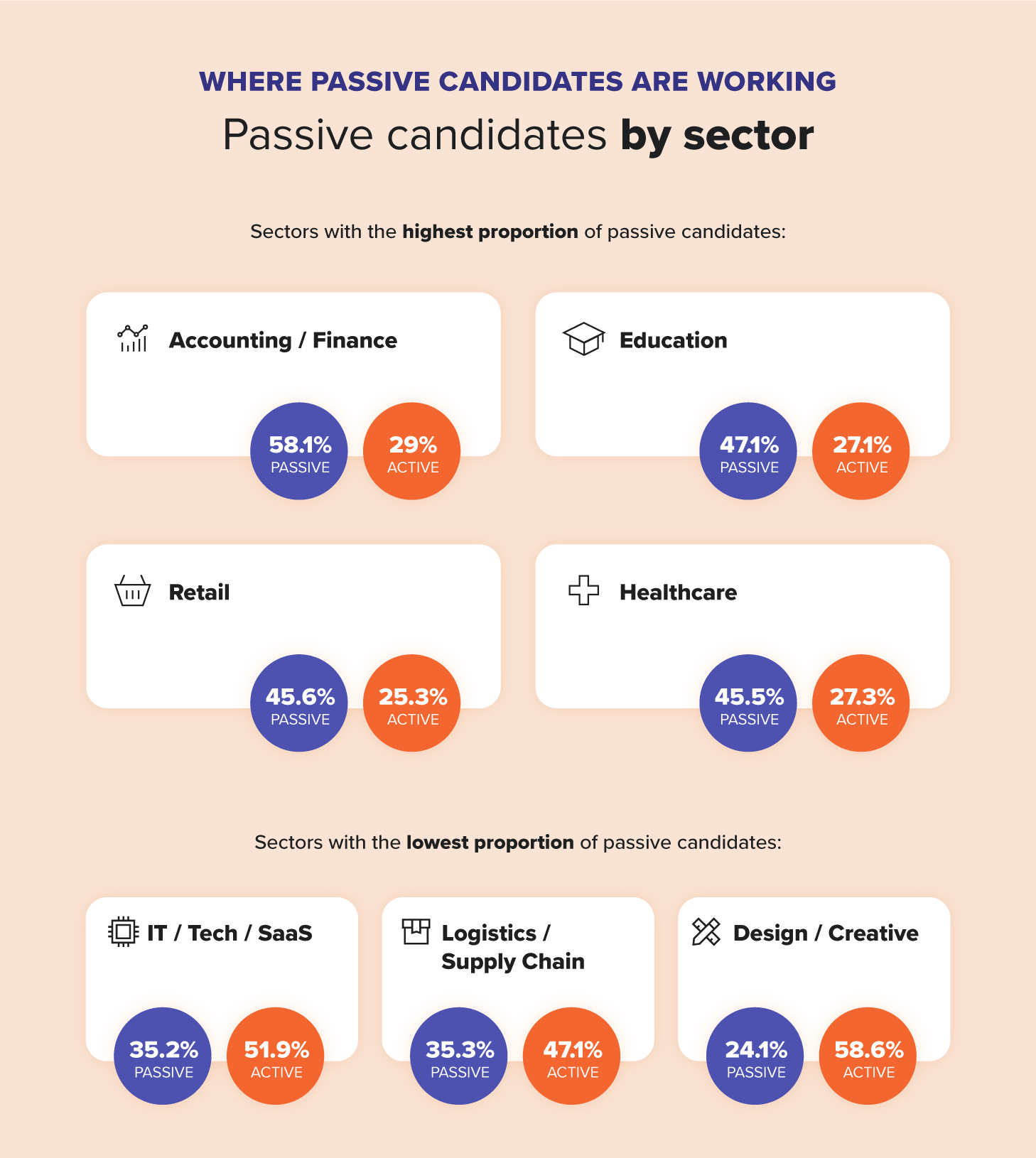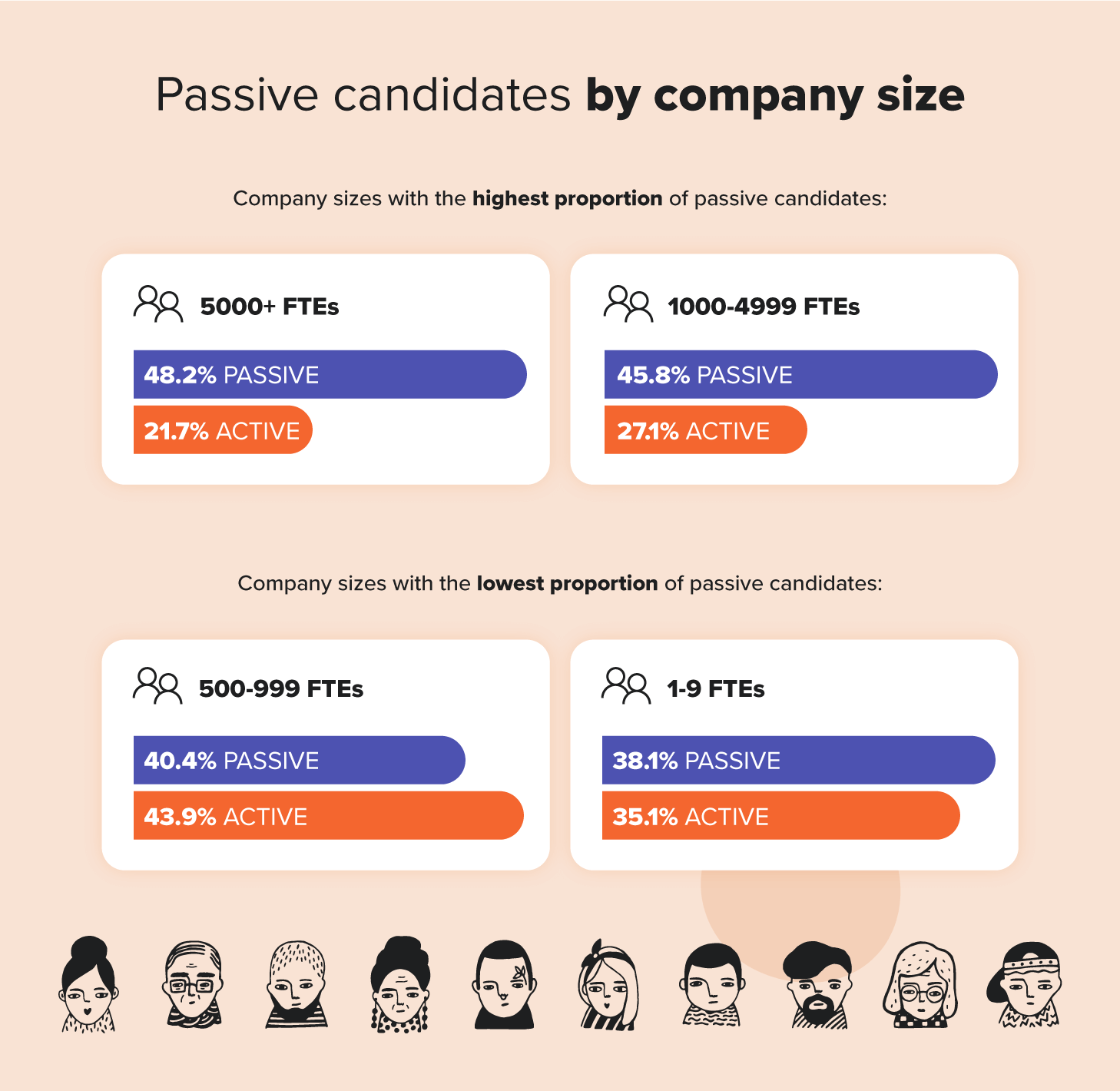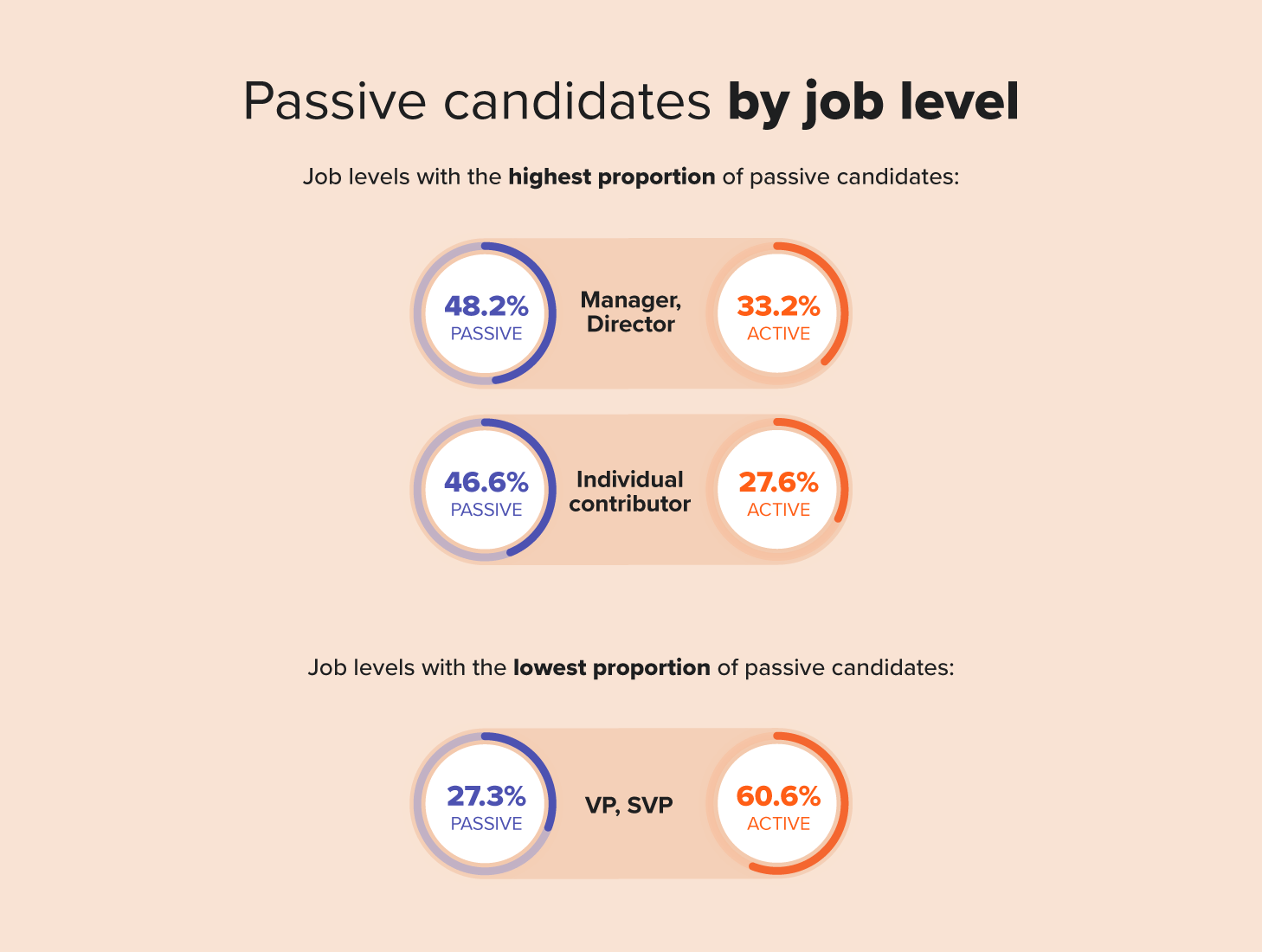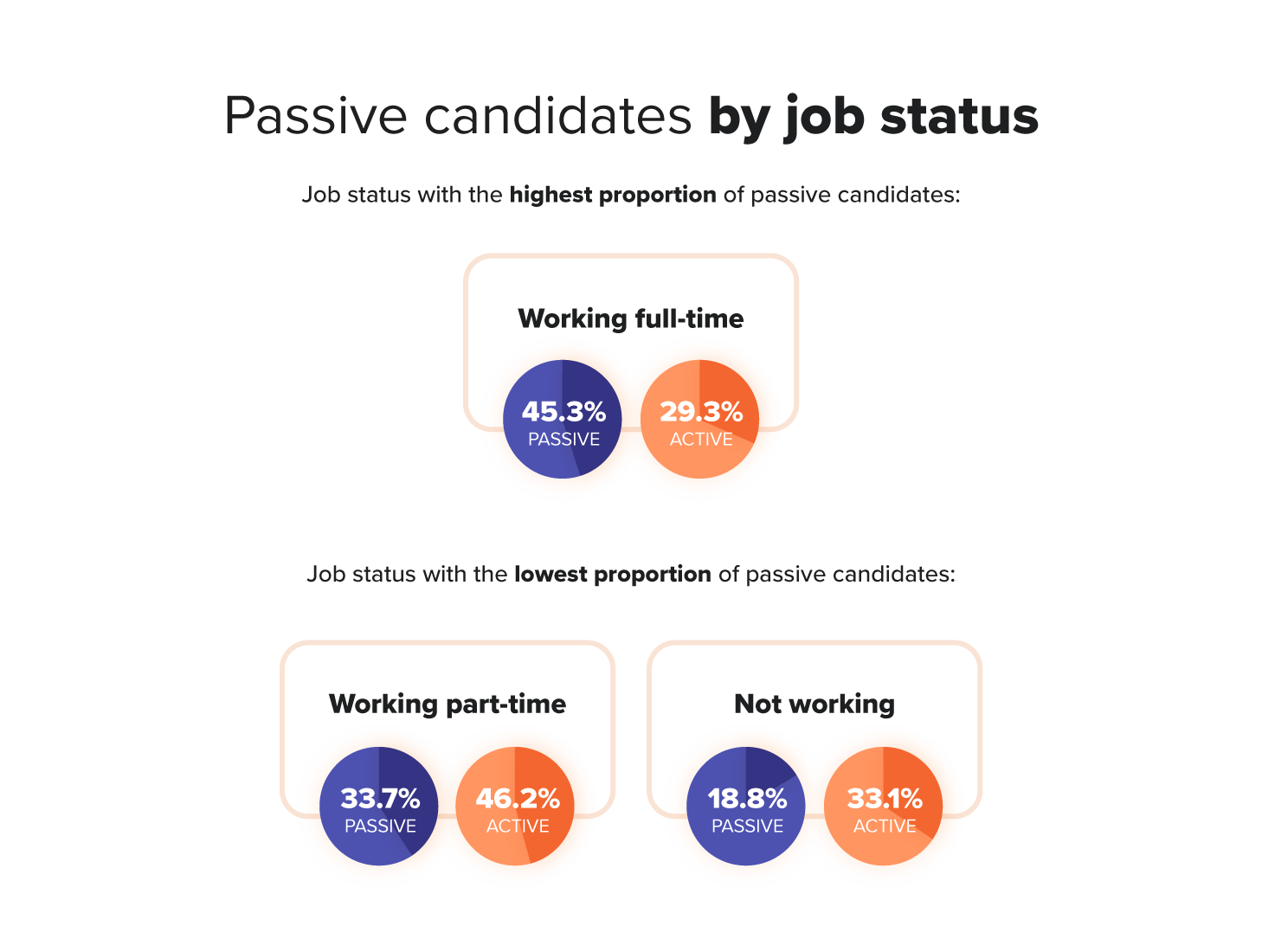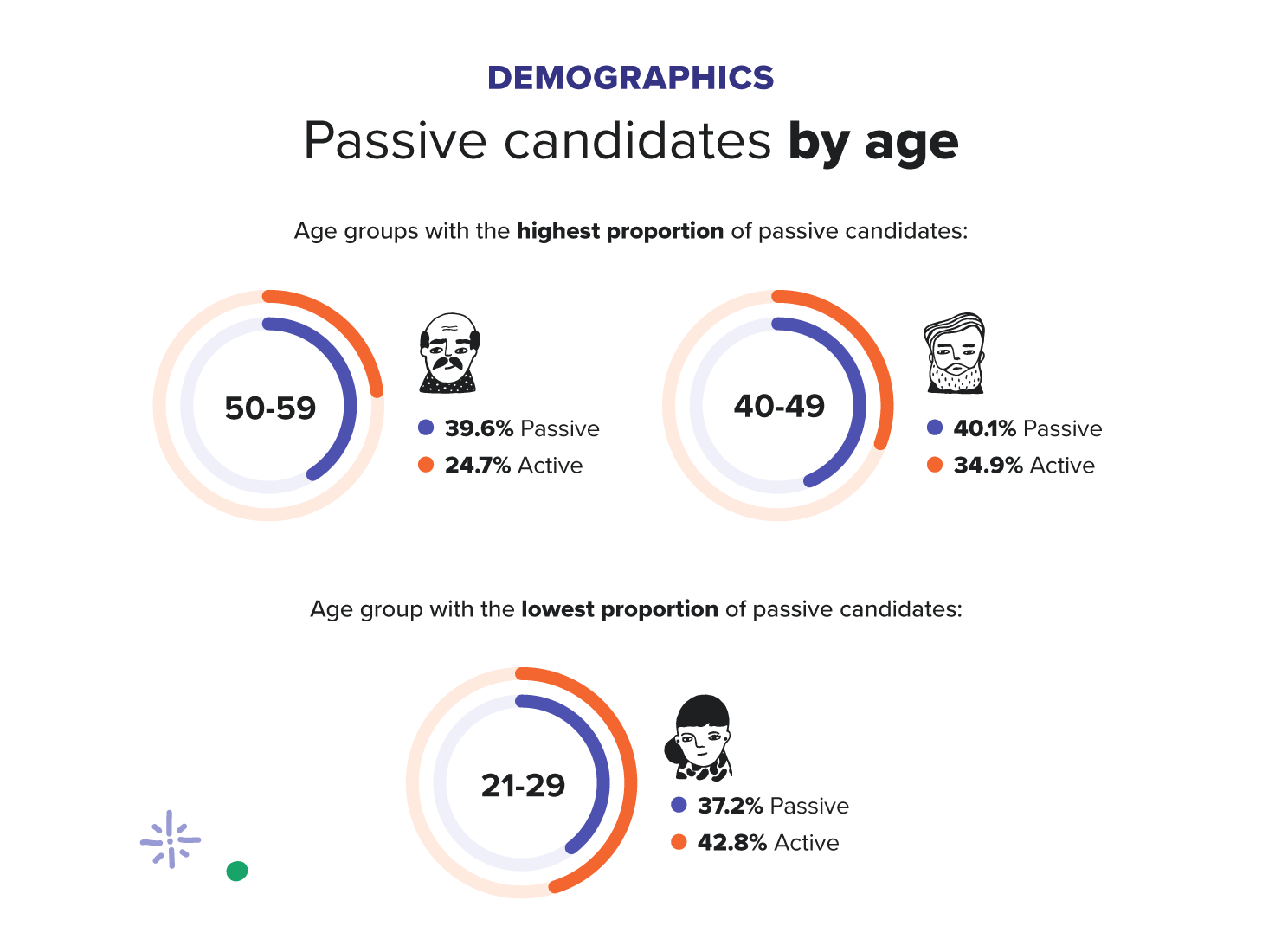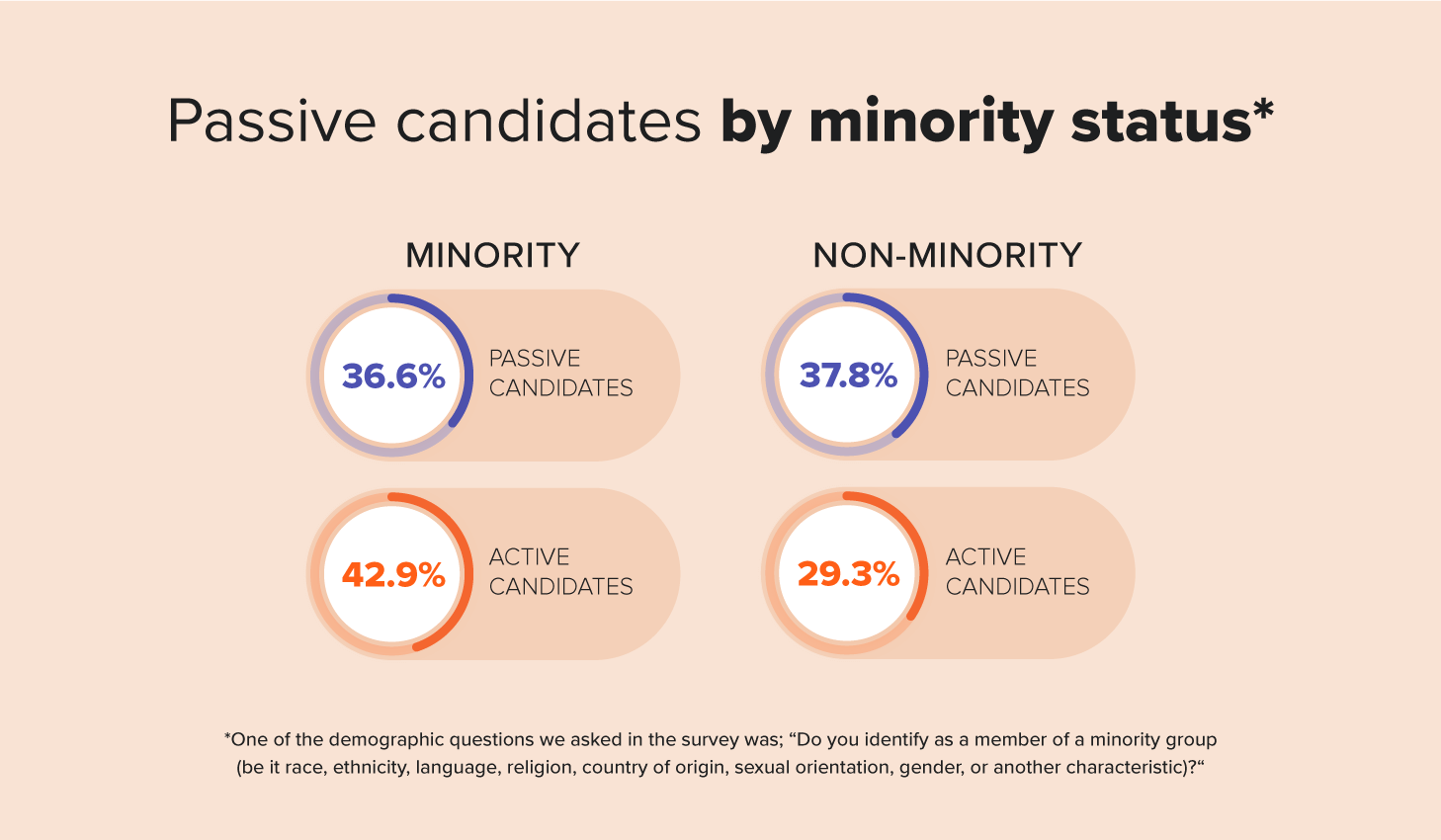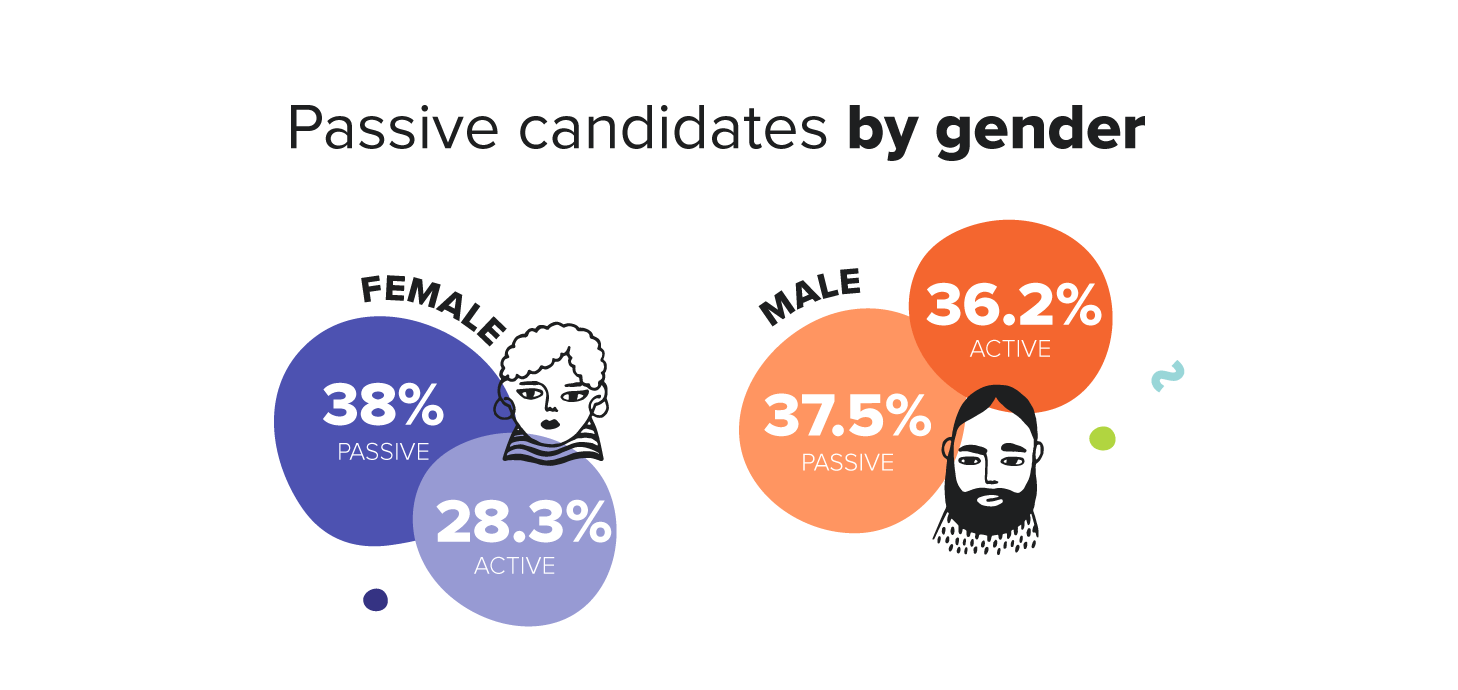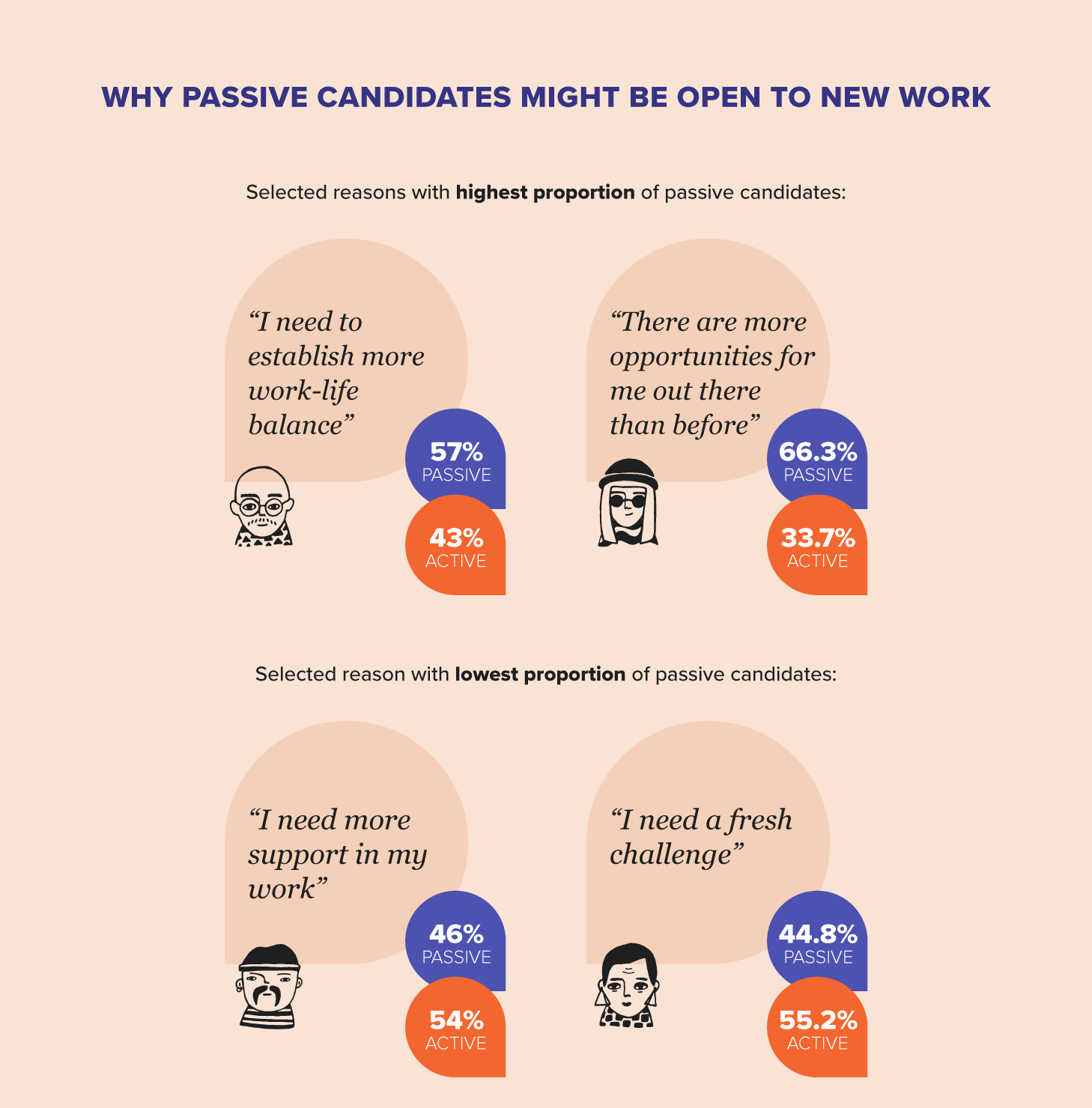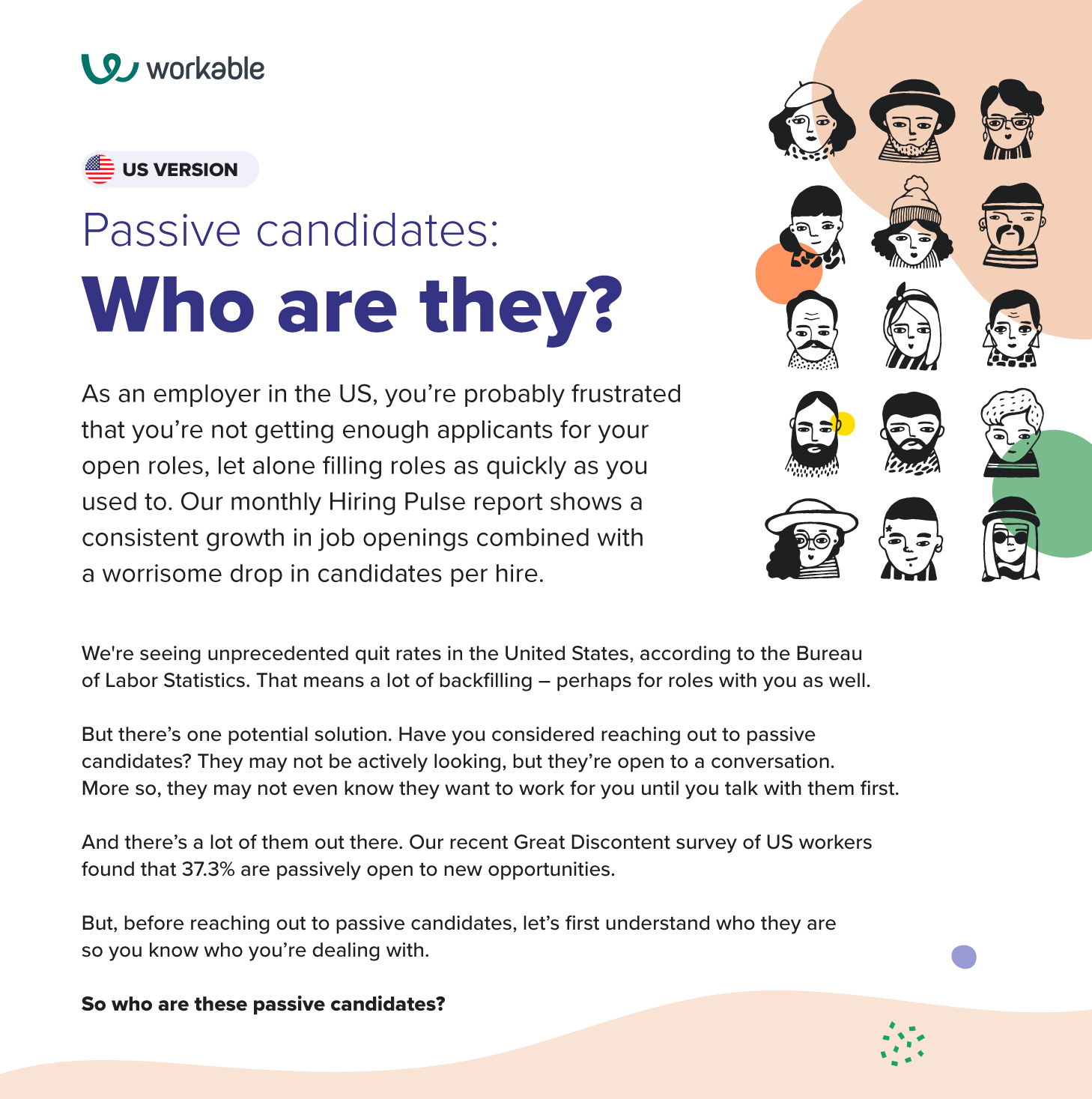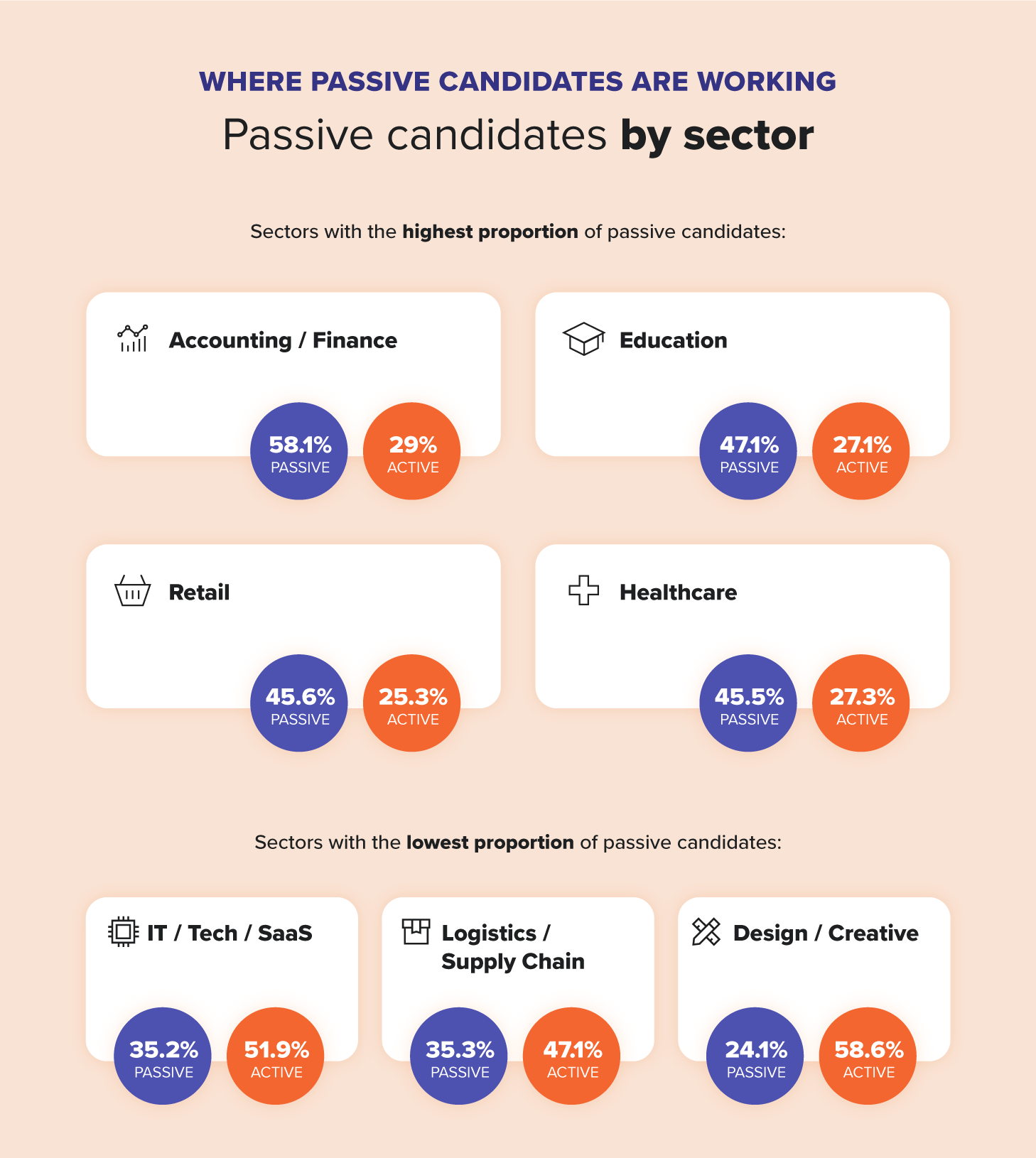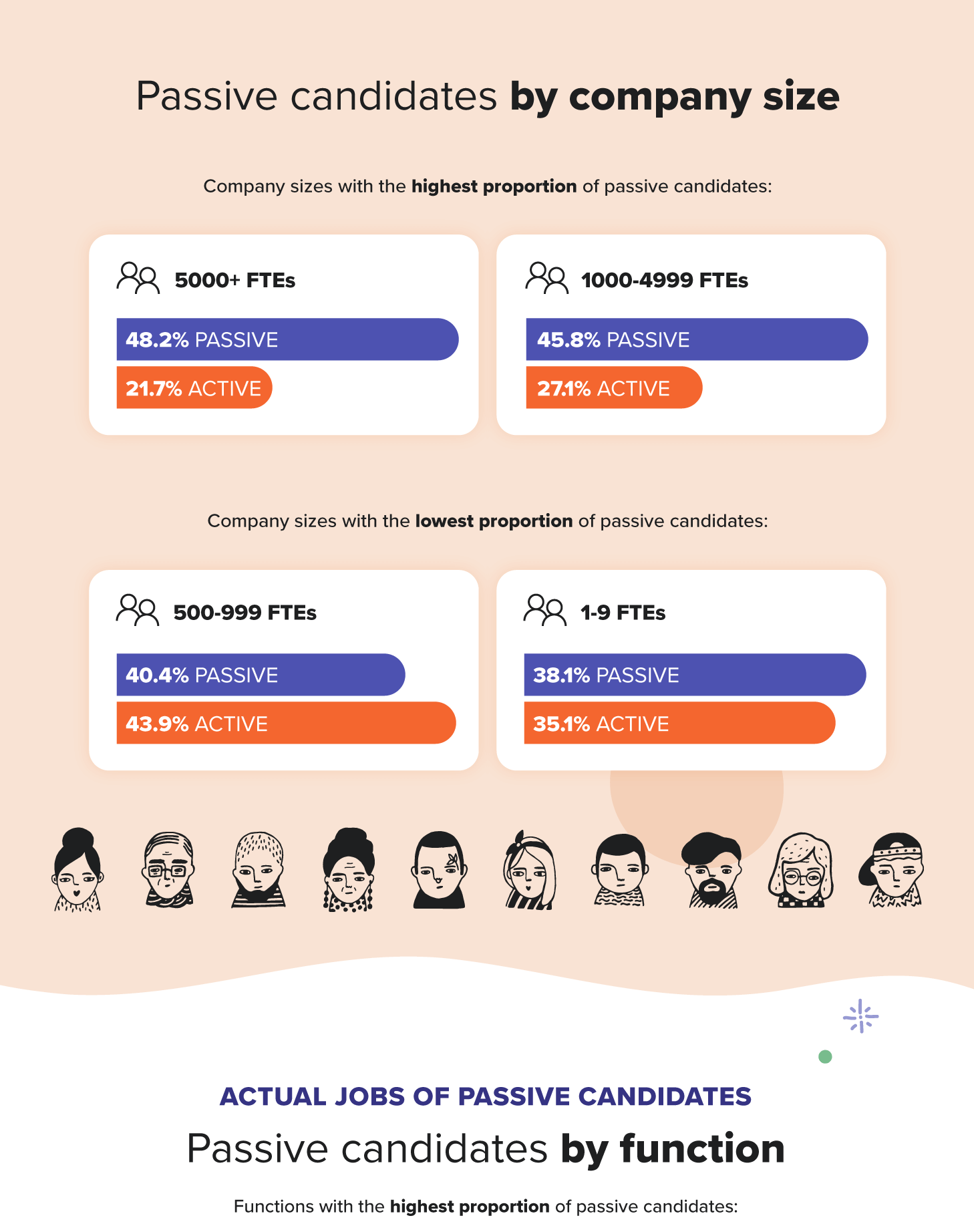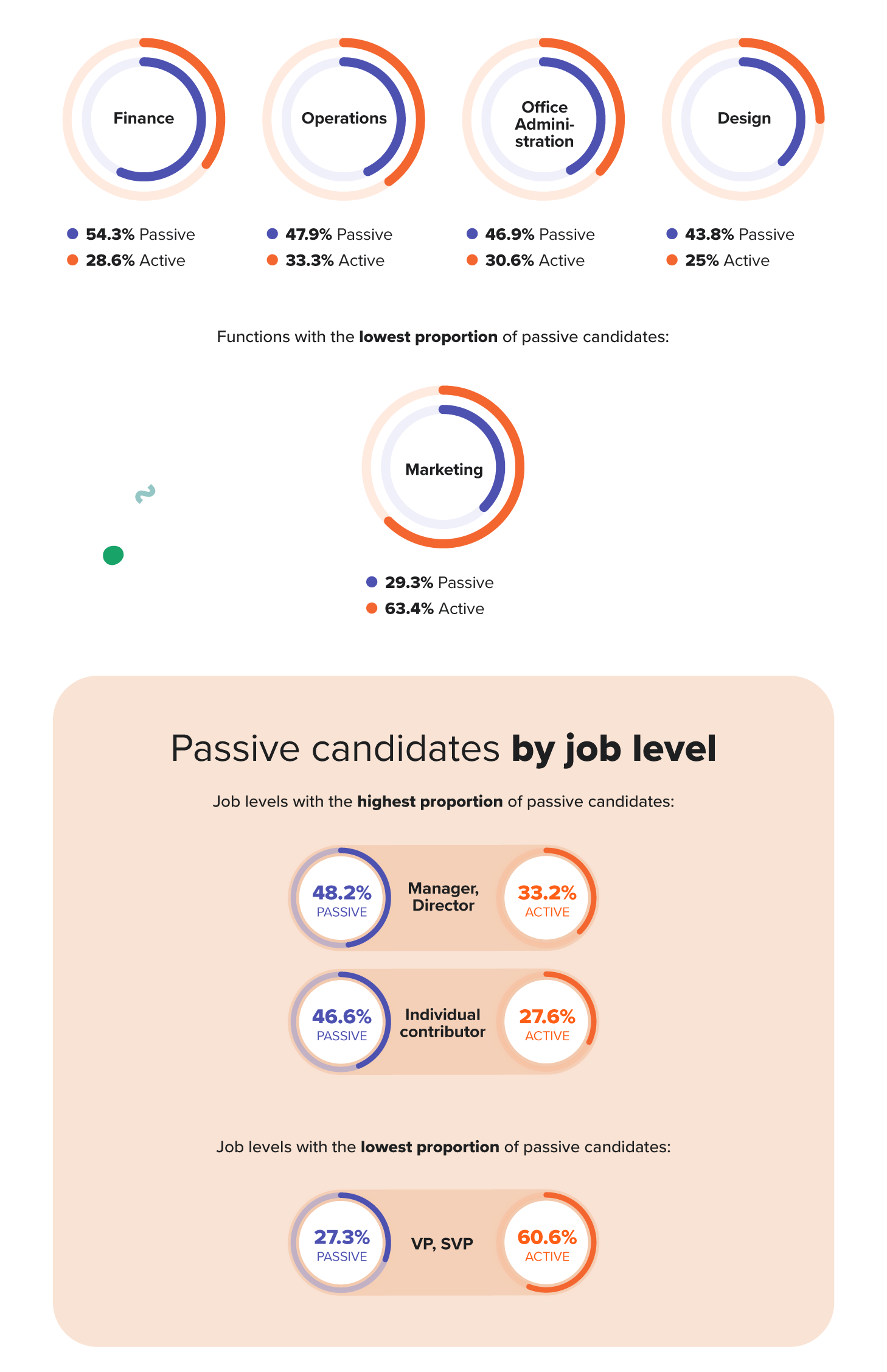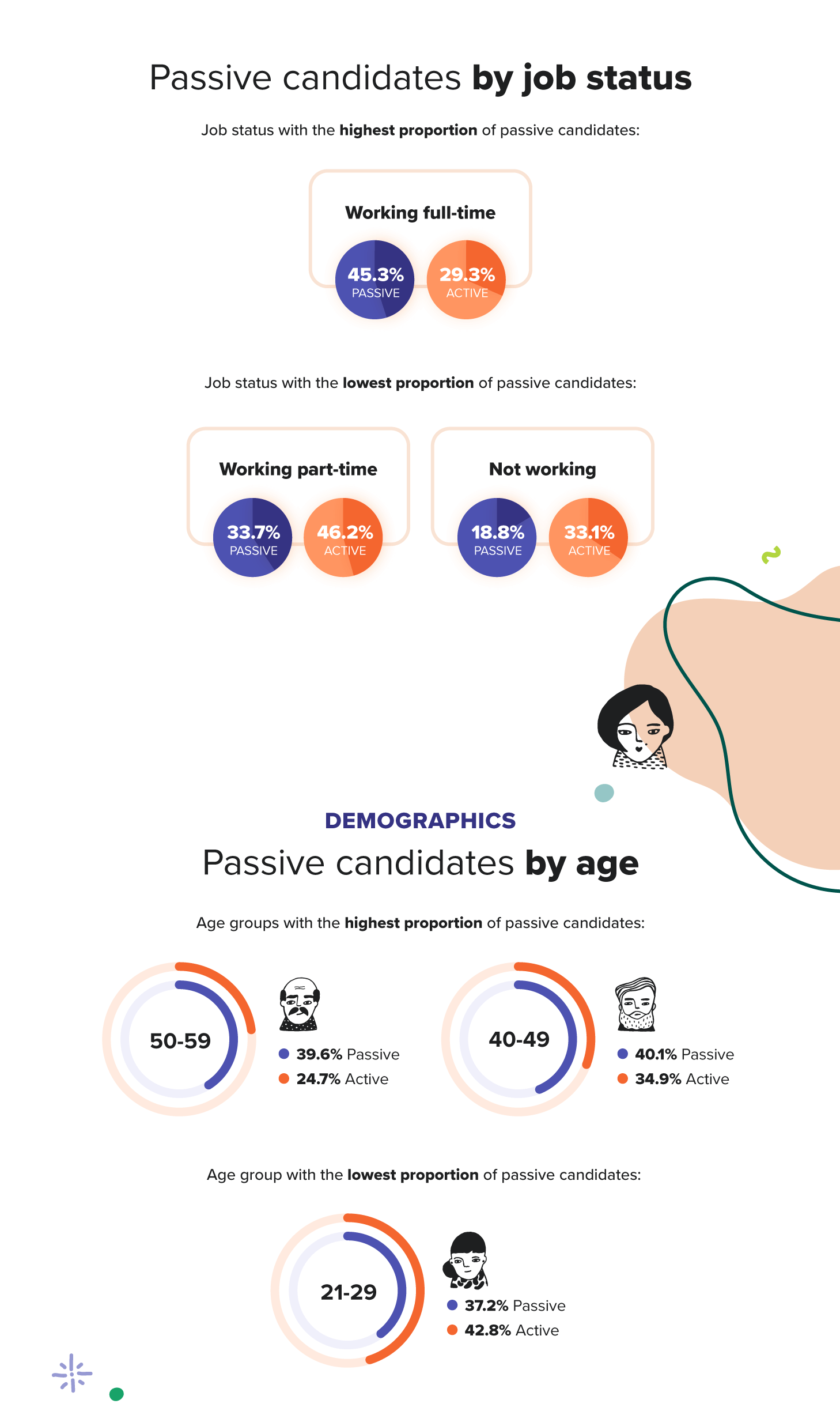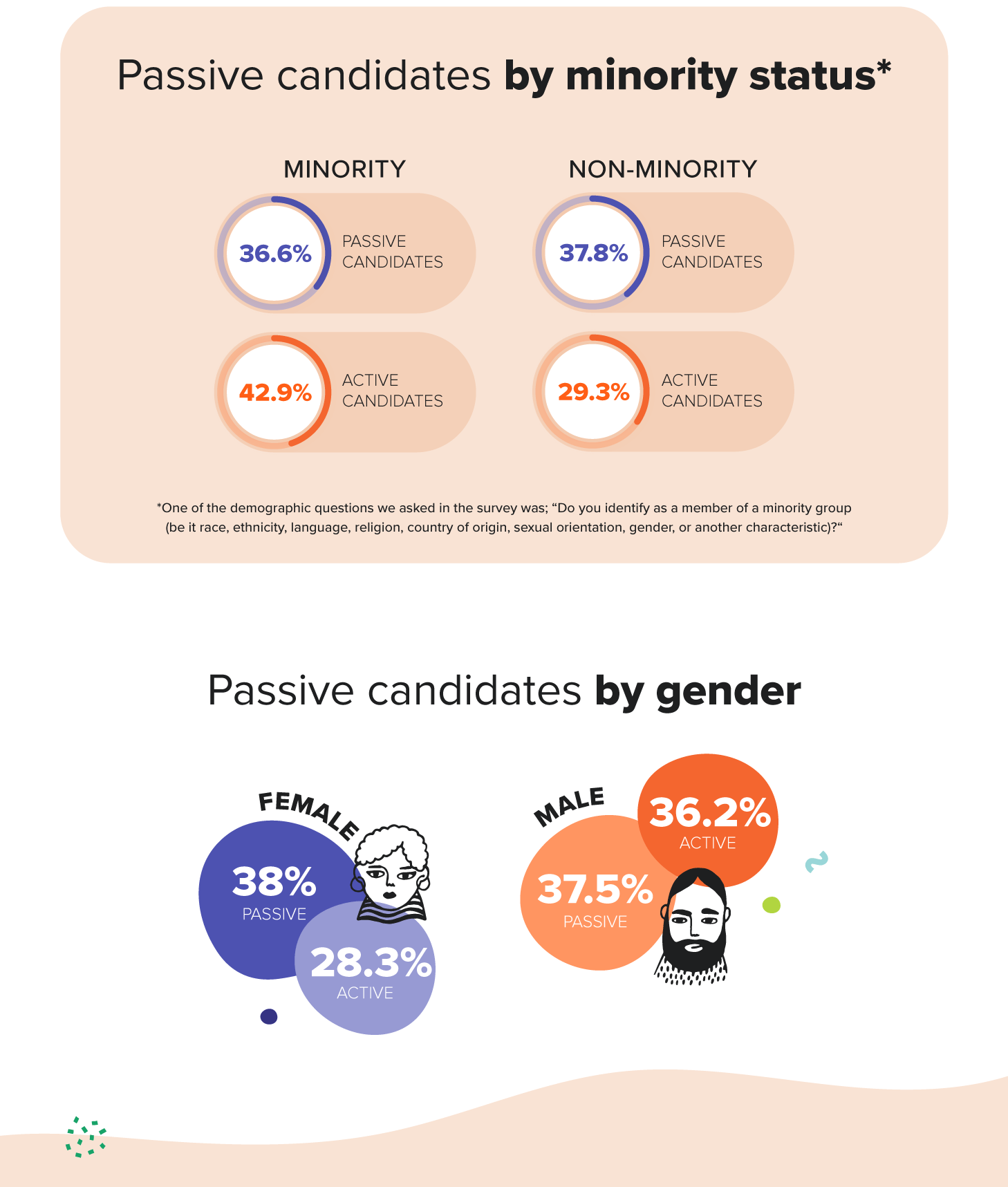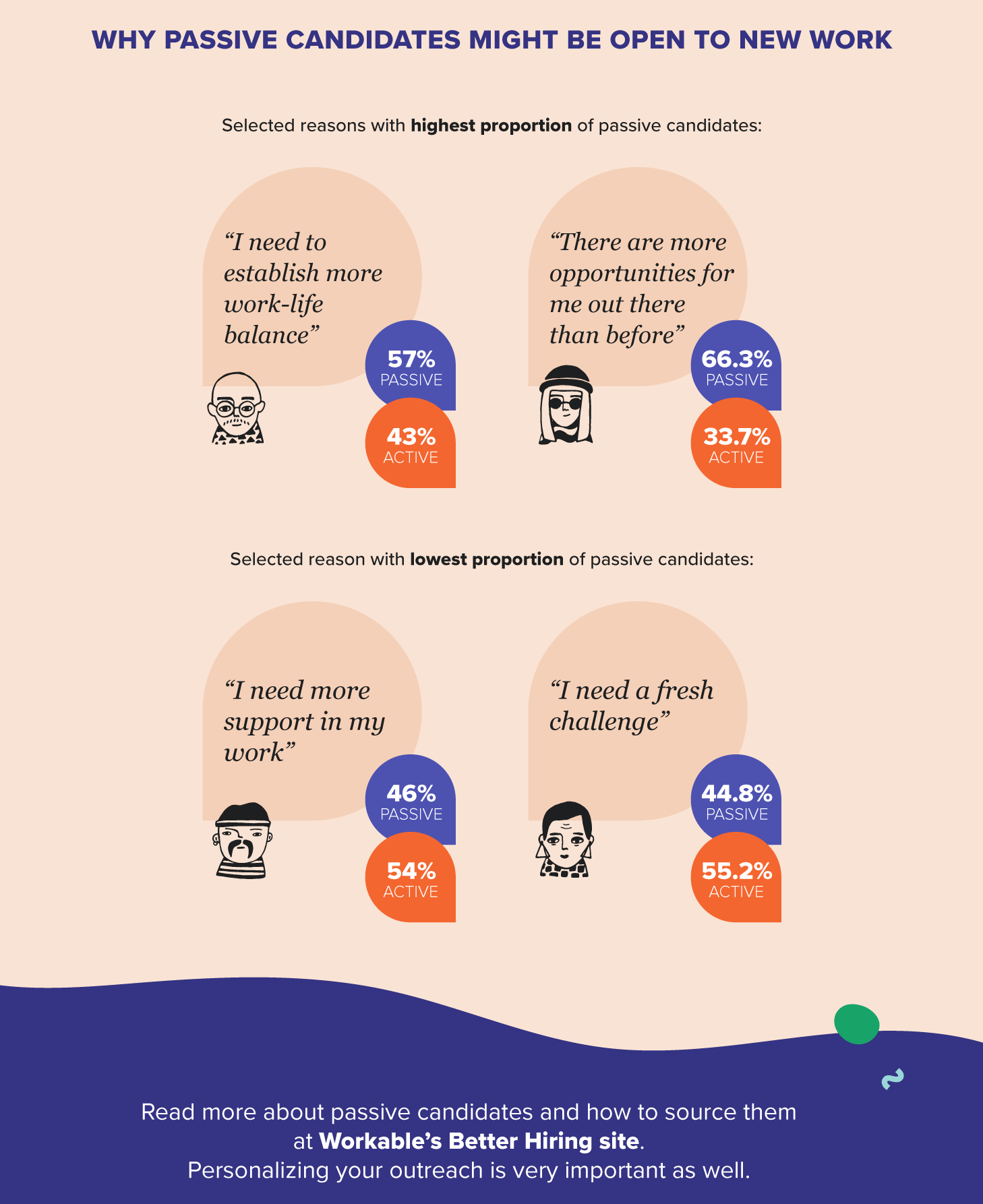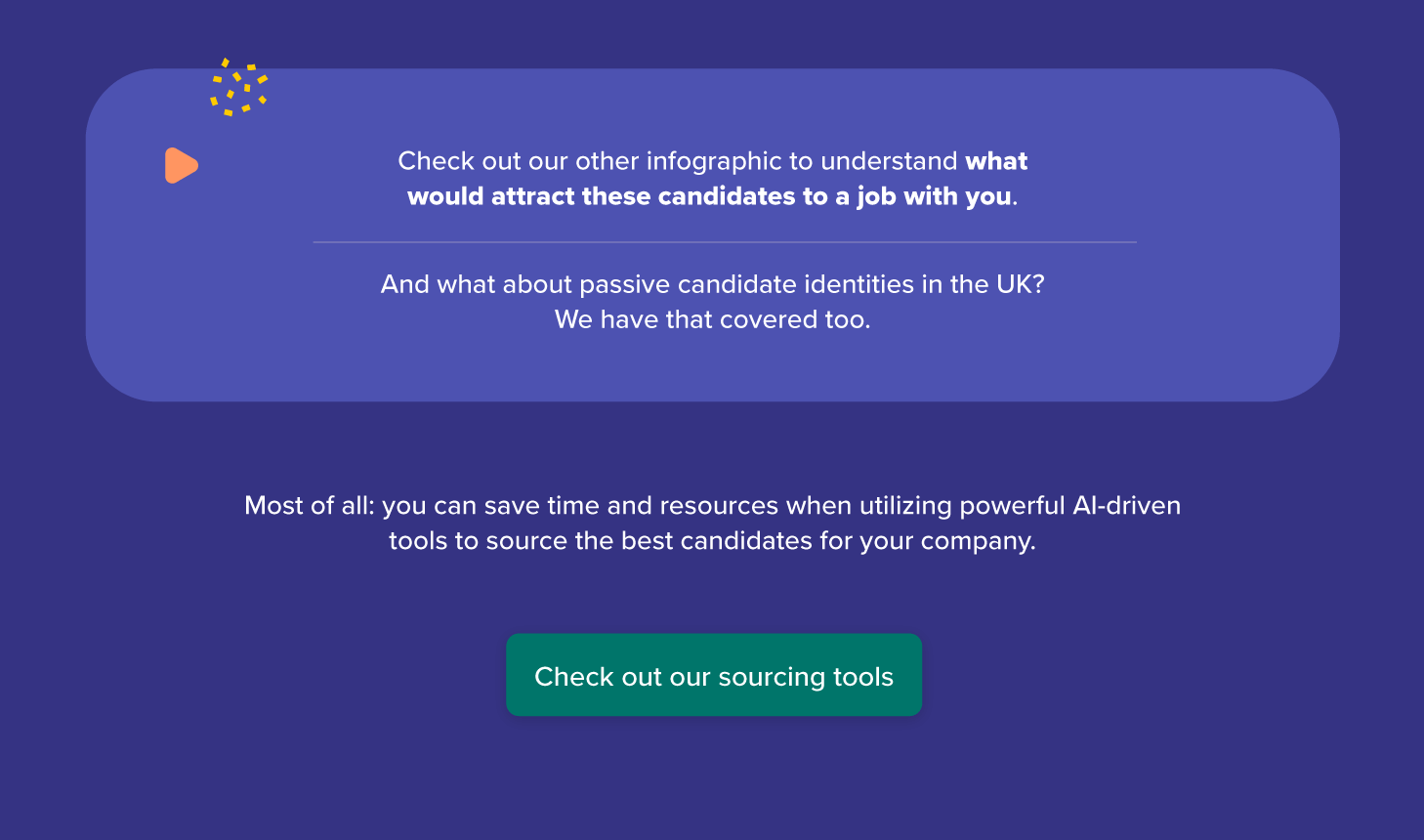INFOGRAPHIC: 37% of US workers are passive candidates. Who are they?
Passive candidates, who are open to new opportunities but not actively seeking, make up 37.3% of US workers. They are prevalent in sectors like accounting, education, retail, and healthcare, and are often found in larger companies. Understanding their demographics and motivations can aid in successful recruitment.

As an employer in the US, you’re probably frustrated that you’re not getting enough applicants for your open roles, let alone filling roles as quickly as you used to. Our monthly Hiring Pulse report shows a consistent growth in job openings combined with a worrisome drop in candidates per hire.
We’re seeing unprecedented quit levels in the United States, according to the Bureau of Labor Statistics. That means a lot of backfilling – perhaps for roles with you as well.
But there’s one potential solution. Have you considered reaching out to passive candidates? They may not be actively looking, but they’re open to a conversation. More so, they may not even know they want to work for you until you talk with them first.
Want to see all the data in one place? Check out the full infographic below or download it for your own files.
And there’s a lot of them out there. Our recent Great Discontent survey of US workers found that 37.3% are passively open to new opportunities.
But, before reaching out to passive candidates, let’s first understand who they are so you know who you’re dealing with.
So who are these passive candidates?
Passive candidates by sector
Let’s start with where they’re working. If you’re hiring in accounting, education, retail, or healthcare, passive candidates are your opportunity to get ahead. Supply chain, tech and design have the most active jobseekers.
Passive candidates by company size
The larger the company, the more likely they’ll have far more passive than active candidates. But the sweet spot for candidates in general are in the 100-999 FTE range.
Now, let’s look at their actual jobs:
Passive candidates by function
Finance, operations, administration and design workers are more set in their roles but they’re open to talking about a new job. Those in marketing are the polar opposite.
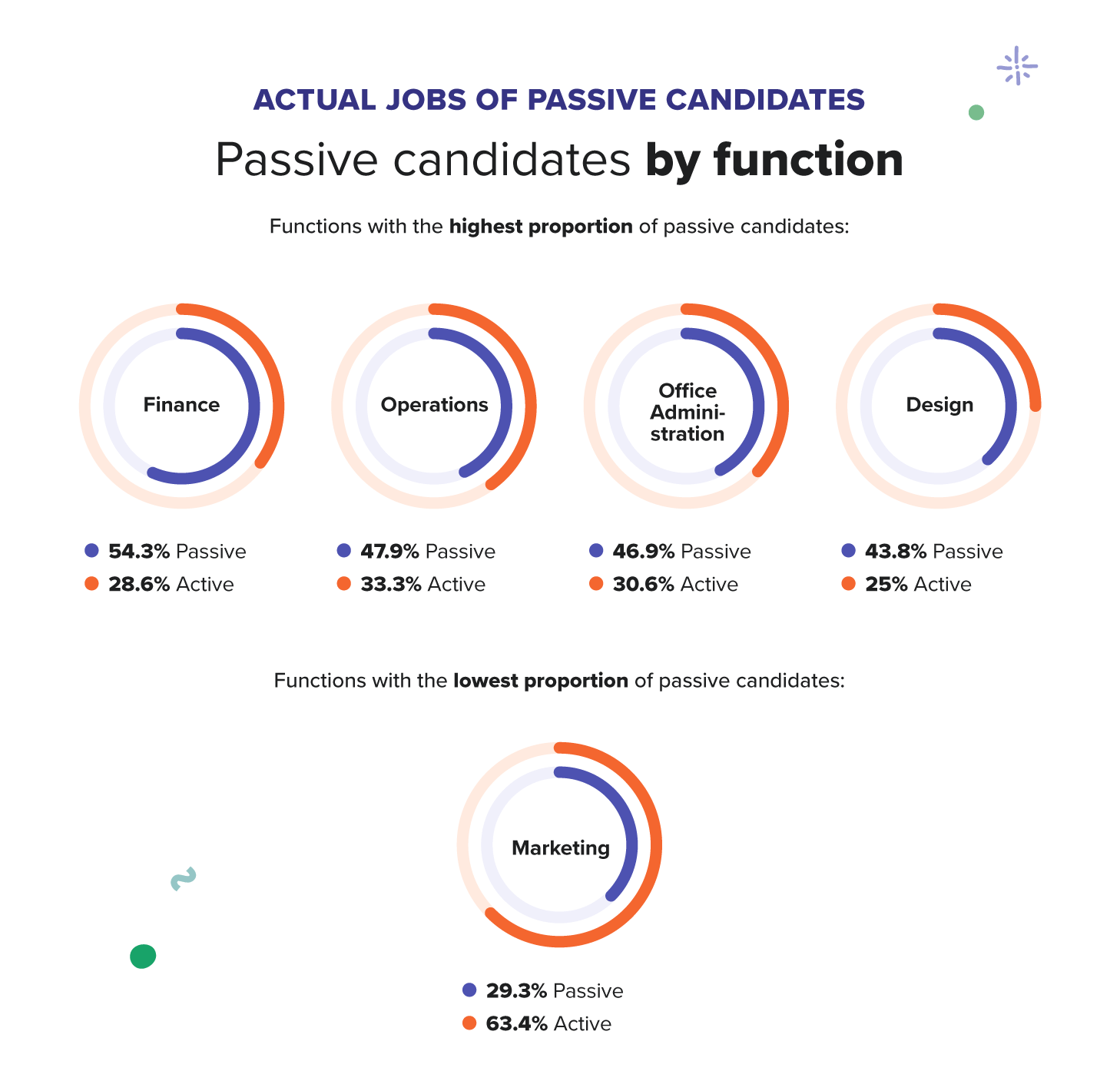
Passive candidates by job level
If you’re hiring for senior positions – especially VP level – the majority of those are actively looking. Managers, directors, and individual contributors are less active.
Passive candidates by job status
Unsurprisingly, full-time workers are the most passive of all job statuses – likely because they’re in a good situation at the moment. That doesn’t mean they’re not open to a new opportunity though.
And finally, their demographics:
Passive candidates by age
The most passive age groups in the job market are in the 40-59 year range – in other words, those likely to be already established in career and life – whereas the youngest adult cohort is very actively hunting for new work opportunities.
Passive candidates by minority status
One of the demographic questions we asked in the survey was; “Do you identify as a member of a minority group (be it race, ethnicity, language, religion, country of origin, sexual orientation, gender, or another characteristic)?”.
We found that those identifying as a non-minority are more likely to be fine where they are, but open to conversations about other jobs. And those identifying as a minority are more actively looking and far less settled in their existing roles – perhaps because they’ve decided their current situation is no longer acceptable or tenable.
Passive candidates by gender
Among those who consider themselves available for new jobs, those identifying as female are more likely to be passive than active candidates. There are studies finding women to be less aggressive in applying for new opportunities, which may be a factor.
And importantly, the reason why they might be open to new work:
Interestingly, those who see more work opportunities out there than in the past are also more likely to be passive candidates. That’s also the case for workers who need more balance between their home and work lives.
We hope you found these insights helpful. You can also read more about passive candidates and how to source them. Personalizing your outreach is very important as well.
Check out our other infographic to understand what would attract these candidates to a job with you. And what about passive candidate identities in the UK? We have that covered too.
Most of all: you can save time and resources when utilizing powerful AI-driven tools to source the best candidates for your company.
Frequently asked questions
- What is a passive candidate?
- A passive candidate is someone who is currently employed and not actively seeking a new job, but is open to discussing new opportunities.
- In which sectors are passive candidates most prevalent?
- Passive candidates are particularly prevalent in sectors such as accounting, education, retail, and healthcare.
- How does company size relate to the presence of passive candidates?
- Larger companies tend to have more passive candidates. However, companies with 100-999 full-time employees (FTE) are generally the most attractive to candidates.
- What job levels and functions have the most passive candidates?
- Finance, operations, administration, and design roles often have more passive candidates. Senior positions, especially at the VP level, tend to have more active job seekers.
- How do demographics factor into passive candidate profiles?
- The most passive age groups are 40-59 years old, likely due to being established in their careers. Full-time workers, non-minorities, and those identifying as female also tend to be more passive.

